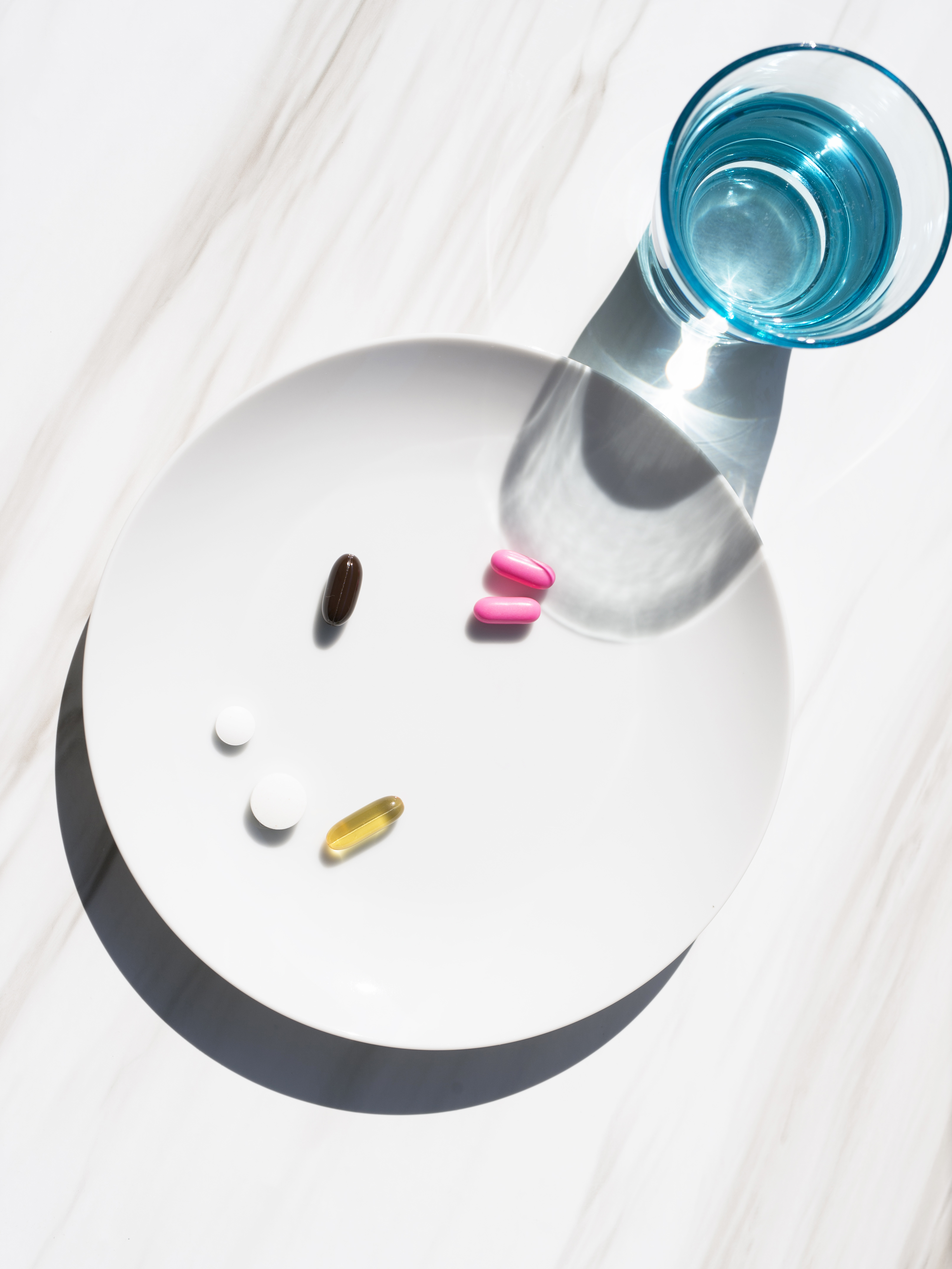We're All Focused on Probiotics, But Prebiotics Deserve a Spotlight Too

Lindsey Metrus
Good skin begins on the inside. Eating your antioxidants, vitamins, and fatty acids is always a good idea, but if breakouts are your concern, you must pay attention to what's happening in your gut. But you knew that. So you eat your yogurt and maybe even take probiotics, right? Well, it turns out that probiotics are only half of the equation. A good start, but not the skin-clearing powerhouse they could be. What's missing? Prebiotics.
What Are Prebiotics?

In a nutshell, prebiotics are food for probiotics; they fuel them. Prebiotics stimulate the growth of good bacteria, and together prebiotics and probiotics rebalance the bacteria in your gut. And the better the environment inside your digestive system is, the better your skin is. Why? Because that's where the body processes waste. When there are too much bad bacteria, undigested toxins are pushed out through the skin, resulting in (you guessed it) acne.
On top of better skin, having positive bacteria in your gut also means having an overall more positive outlook (90% to 95% of the body's serotonin, our "feel-good" neurotransmitter, lives in the gut); a stronger digestive system (while more research needs to be done, studies suggest good bacteria can counteract digestive issues such as IBS, Crohn's disease, and diarrhea); and good vaginal health. Consuming prebiotics helps foster the environment that promotes the good bacteria in your body to reap these benefits.
Where Can You Find Them?

While we know that probiotics are largely found in yogurt, fermented foods like kimchi and sauerkraut, as well as kefir, prebiotics are fairly unchartered territory and are found in fibrous foods like whole grains, chicory, garlic, onions, leeks, artichokes, and bananas.
However, there's another piece of the good bacteria puzzle to consider: The majority of them can't survive in your GI tract because of the severity of your natural stomach acid, so most bacteria tends to live further down in the colon. This means that when you ingest probiotics, you'll need those that can survive the acid trip (so to speak). Isabel Maples, a registered dietician and spokesperson for The Academy of Nutrition Dietetics says that yogurt is a great way to deliver probiotics since it's kept cold (keeping the live bacteria cultures, well, alive) and works to neutralize the stomach acid. If you choose to go this route though, Maples says to look for the National Yogurt Association's Live Active Cultures seal, which assures that the cultures will survive the harrowed road ahead. Prebiotics, on the other hand, resist gastric acidity, so you can eat them without fear of disruption. However when it comes to fiber, choosing the right kind is imperative: For example, whole grain wheat breakfast cereal was found to have a prebiotic effect while wheat bran did not in a cross-over study. (Check out this list of effective prebiotic fibers for further clarification.)
As far as supplements are concerned, two of the most common probiotic strains of bacteria, L. acidophilus and Bifidobacterium spp, intrinsically lack the ability to survive acidic conditions in the gut. The latter is more tolerant than the former, however, specific strains of bifidobacterium such as B. longum and B. pseudolongum have shown to be more resistant to acidic conditions, making them key items to look out for on probiotic supplement labels. To help L. acidophilus flourish, studies suggest drinking tomato juice and papaya pulp, which act as a fertilizer for the bacteria.
Another mind-bender for you: All things considered, you don't technically need to take probiotics to reap the benefits of good bacteria in your gut. We naturally have over 500 species of bacteria in the large intestine, many of which are good, meaning that eating prebiotic foods will help fuel the good bacteria we already have. In fact, because significant research is lacking, the European Union has actually banned the use of the word "probiotic" in marketing jargon unless a product receives approval for a health claim, which, as of 2016, none have. In the United States, probiotics are unregulated and not subject to FDA oversight, since the dietary supplement space is such a gray area, and as of 2016, the FDA has not approved health claims for any probiotics. Plus, many of the labels sadly don't match what's inside the bottle: ConsumerLab.com found that eight of the products they tested contained less than 1% of the claimed number of live bacteria or of the expected minimum of 1 billion. So until more research is done, you may be better off focusing on prebiotic foods to fuel your existing good bacteria, but if you want to test probiotics, speak with a physician first and decide on the right strain of bacteria for your specific health goals, especially since not all "good bacteria" treat the same health issues.
This article is provided for informational purposes only and is not intended to be used in the place of advice of your physician or other medical professionals. You should always consult with your doctor or healthcare provider first with any health-related questions.

Jane Birkin
Who are your 5 favorite people to follow on Instagram?@somethingnavy @phoebejtonkin @jenavieve @beautyisboring_ @ctilburymakeup
What's the beauty essential you can’t live without?Concealer
What's your desert island album?Hall Oates Voices
What's your favorite Byrdie.com story? 7 Beauty Secrets To Steal From India, The Middle East, and Beyond See More- Lindsey MetrusContributor